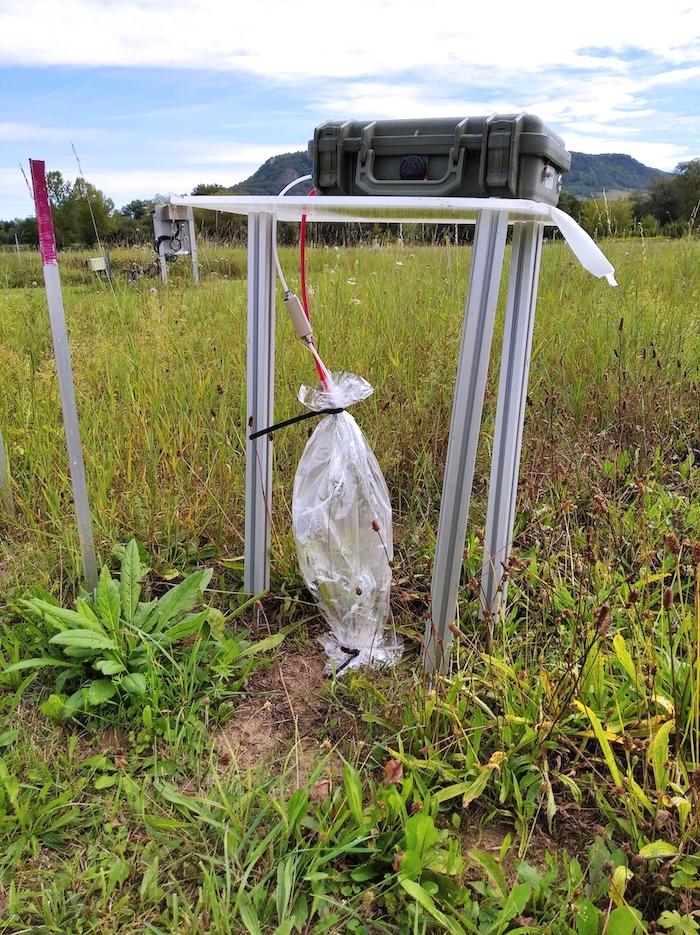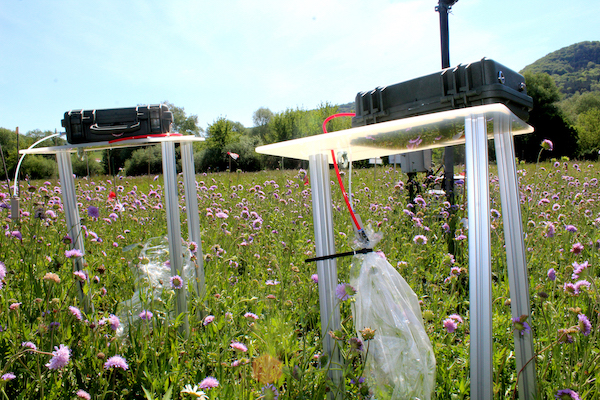Volatiles
Plant volatile organic compounds in the context of BEF relationships

Jena
Principle Investigator
+49 (0)3641 57 1328

Jena
PhD student
+49 (0)3641 57 1314

Plants release a large diversity of volatile organic compounds (VOCs) constitutively and also upon attack by herbivorous insects. VOCs are key components of biotic interactions that underpin essential ecosystem functions (plant production, herbivory, predation). Few studies have investigated VOC emission in complex natural plant communities and our knowledge on the importance of VOCs in the context of biodiversity and ecosystem functioning is scant. How plant history and soil history effects VOC emission is even less well understood.
This subproject aims to elucidate how plant diversity, soil history and plant history affect the emission of constitutive and herbivore-induced VOCs from selected plant species and experimental plant communities of the Jena Experiment. The descriptive data that will be acquired within the proposed research of this subproject will lay the foundation for formulating precise hypotheses on the defensive roles of plant VOCs in the context of biodiversity-ecosystem functioning relationships in grassland ecosystems. First, we will elucidate the effects of plant species richness on constitutive and herbivore-induced volatile emission of selected grassland species in the plots of the Field Experiment.

In collaboration with other SPs of this Research Unit, the role of plant genetic identity, insect herbivore and microbial diversity, and above and belowground morphological and chemical traits for plant VOC emission will be studied (WP1). Second, within the framework of the Ecotron Experiment, we will investigate whether soil history and plant history affect the VOC emission of experimental plant communities and the focal plant Plantago lanceolata via compositional differences in soil microbial communities and plant genetic variation as a consequence of microevolutionary changes (WP2). Third, in a microcosm experiment in the greenhouse we will unravel the consequences of plant and soil history for the constitutive and herbivore-induced volatile emission of the focal plant species P. lanceolata with a special focus on microbe-mediated effects (soil and seed microbes). Here, specifically the response of the focal plant species towards feeding by different antagonists (a root feeding nematode, a sucking insect and a chewing insect) is of interest (WP3).
